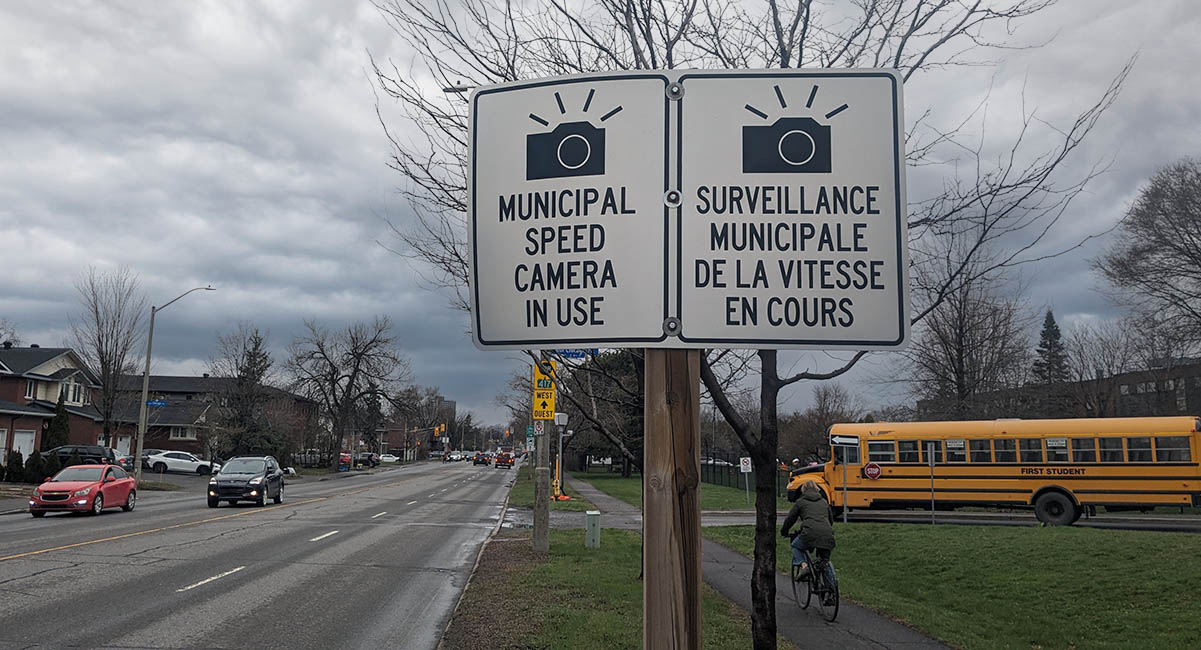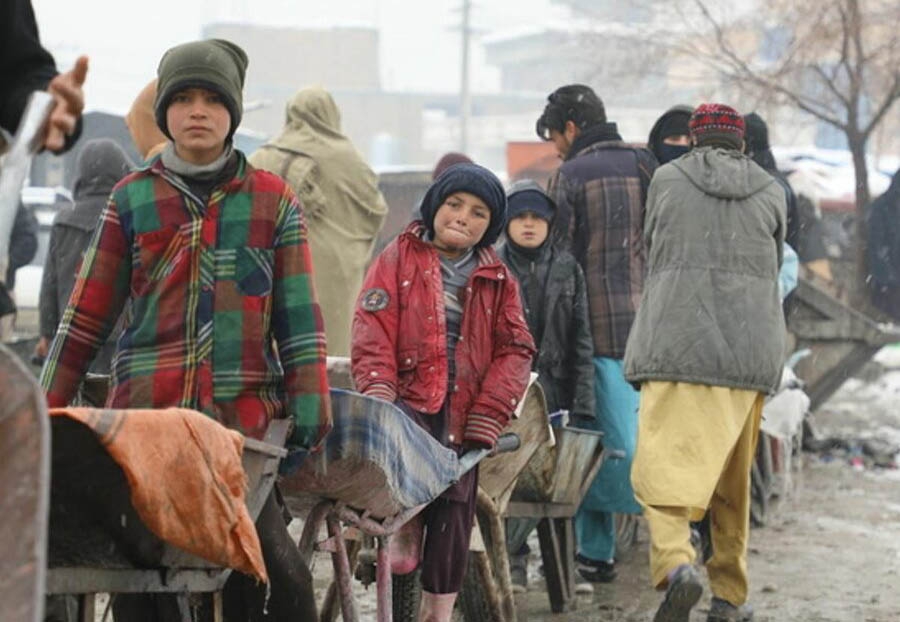
Shallow Graves
The Kingston Mills Locks are located off a road that snakes its way through north Kingston. They can be usefully described as a point at which the city merges with the countryside. It was here that on June 30th, 2009 the Kingston Police made the grim discovery. Three sisters and an older woman were found dead in their Nissan Sentra, submerged in the Rideau Canal. Zainab, Sahar and Geeti – aged 19, 17 and 13 respectively – were the daughters of Mohammad Shafia and Tooba Yayha. The fourth victim was 52-year-old Rona Amir Mohammad, who at the time was thought to be the girls’ aunt.
The Shafia family had driven from Niagara Falls to Kingston the night before, where everyone with the exception of the brother Hamed was to stay, before making the final leg of the journey home to Montreal. After Zainab, Hamed was the second oldest child. Both he and Mohammad would later tell the police that he decided he would keep driving to Montreal that night and return to Kingston in a couple of days. Mohammad would later inform Detective Steve Kroopman that it was a last-second decision for the rest of the family to stop in Kingston. “If Tooba was awake we would have kept driving to Montreal,” he says to the detective. If they had kept driving, his three daughters and their aunt would never have gone missing. Zainab, he would go on to say, had a history of taking the family car out for “joy rides.” Perhaps this explained their disappearance. In any case, when the vehicle and bodies were found, it was assumed their night of innocent fun took a tragic turn. At some point while driving the car Zainab found her way to the locks and, with the other three passengers still in the car, drove into the Rideau Canal. Trapped in the submerged vehicle, the three sisters and their aunt had little chance of escape. Although the water in which the car and bodies were submerged was only a few metres deep, it was believed the four victims drowned to death.
Publicly, the police allowed the family to grieve. Nevertheless, their suspicions about the parents and their son were immediate and ran deep. The reasons were obvious. The notion that three daughters and their aunt would take a car out for a ‘joy ride’ was possible, but hardly likely. Rona’s presence alone would have raised doubts for the police. How irresponsible would she have to have been to willingly go out with three young girls? Zainab, after all, didn’t even have her driver’s license. That sort of behaviour would not only have been irresponsible, but utterly reckless given what the police soon learned about her family. Mohammad, the police discovered, was exceedingly strict, especially where his daughters were concerned. Their punishment for taking the car out for a ride would have been severe. The story’s implausibility was exacerbated by its tragic end. It was almost impossible to imagine a scenario in which a driver would mistakenly veer off the road, onto to the grass and then into the canal. It would require a deliberate effort to drive a car in the part of the canal where the Nissan was found.

Indeed the Shafias’ story and the Kingston Police’s immediate response established a pattern that was to become the hallmark of the subsequent investigation and trial. The Shafias’ claims about what happened on that fateful night their daughters and Rona went missing were bizarrely inconsistent and implausible. The Shafias, moreover, were ill prepared for the intense scrutiny to which they would soon be subject. All three would change their stories and all three would sometimes appear indifferent and even disdainful of the legal process in which they were hopelessly caught up. The police and Crown prosecutors, by contrast, were professionally trained to tease out inconsistencies in these sorts of stories and to uncover motives for murder. The police didn’t allow their immediate suspicions to prompt unwarranted conclusions. They would meticulously gather and examine evidence while remaining committed to upholding the rights of Mohammad, Tooba and Hamed. The police also knew had to set traps. The Shafias would quickly fall into one.
Police suspicions justified a court -issued warrant allowing police to wiretap conversations among Mohammad, Tooba and Hamed. The recorded conversations would prove decisive in the investigation. Mohammad especially would strike any listener as not only guilty of the murders, but also unrepentant and self-righteous.
“If they came back a hundred times, I would kill them a hundred times again,” he says in one conversation.
He refers to his daughters as ‘whores’ who brought shame to the family. When Tooba expresses a hint of remorse, he insists that what they did was right. The recorded conversations were remarkably self incriminating. Together they constitute a damning body of evidence. They were also remarkable for establishing the twist-ed rationale for the murders. “Even if they hoist me up in the gallows, nothing is more dear to me than my honour….Let’s leave our destiny to God,” he says at one point. In two sentences, Mohammad articulates the ideas motivating his decision to kill his daughters and his first wife. Mohammad’s faith complemented his zealous commitment to upholding his family’s honour.
In addition to the recorded conversations among Mohammad, Tooba and Hamed, there was other compelling evidence that the three were guilty of killing the three sisters and Rona. It was soon discovered that Rona was not the aunt of the sisters but rather Mohammad’s other wife. Hamed’s claim that he had driven to Montreal the night the four victims went missing was contradicted by his cell phone activity, which suggested he remained in Kingston. He would call 911 the next day to inform the operator he had been in a single vehicle accident in an empty Montreal parking lot. Yet there were parts of a broken headlight found at the Kingston Locks, suggesting that the Nissan had been pushed by another vehicle into the canal. That vehicle was presumed to be the family’s Lexus. The used Nissan had been purchased only days before. Hamed had conducted on-line searches for web sites that provide instruction on how to murder someone without getting caught.
Police formally charged Mohammad, Tooba and Hamed with four counts of first-degree murder on July 22, 2009.
There was a shared sense among those observing the trial – the media and local residents – that the deaths were not a tragic accident, but instead a horrible crime. Each new revelation only confirmed the shared belief that Mohammad, Tooba and Hamed were guilty of the crimes for which they were on trial. Mohammad couldn’t even summon a sense of remorse. At one point in the proceedings prosecutor Laurie Lacelle asked him if he thought his daughters and Rona deserved to die.
“Yes,” he said.

Yet the prosecution’s assessment could not definitively answer all questions concerning the deaths of the daughters and Rona. The biggest challenge stemmed from the indeterminate outcomes of the forensic reports. For the reports did not precisely reveal how Zainab, Sahar, Geeti and Rona died. If they drowned, why was there no indication they had tried to escape from the vehicle after it was pushed into the Rideau Canal? Were they rendered unconscious before being pushed? This would seem likely and yet the pathologists suggested there were no traces of alcohol or drugs in the four women’s bodies. Both the Crown and the police must have been aware of the potential uncertainties such imprecise findings may have raised for the jury. Their shared strategy thus had to focus less on the question of how precisely the four women were killed, and more on why they were killed. Why would Mohammad, along with his second wife Tooba and their son Hamed be intent on killing four of their own flesh and blood in such brutal fashion? The answer, according to the Crown, was to preserve the family’s honour. The prosecution would contend that according to the three accused, the daughters had sacrificed that honour by shamelessly adopting Western styles of dress and behaviours. As for Rona, she was an expensive nuisance whose inability to conceive was another source of family shame. The proof was in the long trail of evidence of abuse and intimidation. The Shafias created an intolerable climate of fear from which all the victims in their own way had tried to escape.
Rona Mohammad’s memoirs make for compelling reading. The story that emerges from them is one of a middle-aged woman who felt trapped in an abusive marriage and an unhappy home life. The memoirs document the family’s circuitous route to Canada, the birth of the family’s seven children and, most interestingly, the growing rivalry between Rona and Tooba, Rona’s growing fear of Shafia and Sahar’s despair. It is small wonder that the prosecution introduced the diary as an important piece of evidence. Rona’s estrangement from Mohammad appears rooted in her inability to conceive. Mohammad went to great lengths to help Rona towards this end, but also resented her for her inability to give him the children he desperately desired. Tooba was able to provide Mohammad with seven children, a fact that she apparently leveraged to assume a more privileged and dominant role in the Mohammad household. Rona strikes the reader as increasingly aware of her precarious place in the family. She fears Mohammad and Tooba’s shared hostility. Occasionally she is defiant, especially towards Tooba. But her defiance is tempered by her genuine desire to establish a more secure existence and more fulfilling home life. Her efforts were to no avail. At one point, Rona writes of a conversation between herself and Tooba.
“You are not his wife, you are my servant,” Tooba says to Rona.
On another day, she writes of Mohammad “hitting her.”
By virtue of being the oldest sibling, Zainab had come closest to escaping her oppressive home life. She would fall in love with a young man. At one point, she left home for the relative safety of a women’s shelter. But, as the jury would learn, the family persuaded her to return home. She would later marry her boyfriend, only to have the marriage annulled the next day.

The trail of evidence led directly back not only to the Shafia household, but to Antoine de Saint-Exupery, a school located in the Montreal borough St. Leonard and attended by both Sahar and Geeti. School staff was increasingly alarmed by both girls’ behaviour and wondered if their home life was the source of their struggles. There was evidence that the parents did not want Sahar and Geeti to get an education. Their absentee record would have been among the highest among students at the school. Their grades suffered. Sahar attempted suicide and spoke of how fearful she was of her father and brother. She told teachers that she hoped to leave school and get a job. It was not because she was without academic ambition. On the contrary, Sahar spoke of wanting to study to become a gynecologist and return to Afghanistan with the hope of helping women there. But her home life was so distorted by fear and abuse that what she wanted to do now was to work so that she could leave home and support herself and her sister Geeti. That scenario was impossible. Quebec’s laws would not have allowed it.
Sahar’s terror is what inspired hopes of escape, but it is what also served to keep her in her family’s grips. When confronted with the knowledge that her parents would be called to the school, she immediately retracted the allegations. School staff would soon learn why. When speaking to staff, Tooba wanted to know if Sahar had kissed a boy she was perhaps dating. Sahar’s teacher at the time responded no, Sahar had not kissed a boy not because it wasn’t true, but because she feared for Sahar’s safety.
For those teachers and school officials who knew Sahar and Geeti, the evidence that their home life was characterized by threats, intimidation and sadness was too great to ignore but beyond the school’s mandate to address. Quebec’s Youth Protection Agency was thus called to assess the sisters’ problems in school and at home. The response on the part of the child protection agency was immediate but, in the end, somewhat bewildering.
The testimony of Jenna Rowe exemplifies why this is so. Jenna Rowe is a retired social worker who worked for Quebec’s Youth Protec-tion Agency. In her testimony, she conveyed intelligence and sensitivity, exactly the combination of traits one would hope to find in a social worker. On May 7, 2008, she was given a Code 1 report (codes highlight the urgency of the problem. Code 1 is the most urgent) regarding Sahar. Sahar was complaining of being extremely fearful of her father and had recently attempted to overdose on medication in a bid to commit suicide. But when Ms. Rowe spoke with Sahar in person, the young girl again retracted her allegations. She pleaded that her parents not be informed of what she had said or that she had attempted suicide. Ms. Rowe insisted, however, that she was obligated to speak with her parents. According to Ms. Rowe, Sahar was crying profusely during their entire conversation and that she was extremely fearful. Although not inevitable, such a reaction on the part of a young girl who has very good reason to fear her parents is somewhat predictable. If her father is abusive, then of course she is going to be terrified of him knowing that she has disclosed such abuse to teachers and social workers. Social workers must be intimately familiar with this sort of scenario.
Moreover, Ms. Rowe’s interviews with other family members should have done nothing to assuage her concerns for Sahar’s safety. Tooba indicated she had no idea Sahar felt “emotionally rejected,” nor did she know that Sahar had taken pills in a bid to commit suicide. She adamantly denied they exerted any pressure on Sahar not to go to school. Yet Sahar’s frequent absence from school is one reason why teachers and social workers were so concerned about both Sahar’s home life and her life as a student. Ms. Rowe’s remained deeply suspicious of Tooba’s denials.
Ms. Rowe’s interviews did not end with Sahar’s mother and nor did her suspicions. She met with the father and son that same day. In keeping with everyone’s testimony who had any contact with the father, she said he was “very angry” when he learned a report had been filed. He demanded to know who filed the report and declared from the outset that he would hire a lawyer. Ms. Rowe assured him that he would never be told who filed the report. He angrily denied every allegation. He vehemently dismissed, for example, the suggestion that his son cut Sahar’s arm when he threw a pair of scissors at her. “Do you think I would give my son permission to do that to his sister?” he remarked to Mrs. Rowe.
Other than the string of adamant denials on the part of all family members interviewed, there was little that would have assuaged Ms. Rowe’s concerns for Sahar’s well being. Yet after contacting her manager the decision was made to let Sahar go home, but with the understanding that they would conduct follow up assessments. They did so. On May 8th, Sahar was at school and on May 9th, Ms. Rowe met with Sahar again. Sahar was wearing the hijab that day. Ms. Rowe characterized Sahar as still cautious but happier. She indicated she wanted to stay at home. Somehow this was enough assurance that Sahar’s problems at her home had been satisfactorily resolved. “It was decided the child wasn’t necessarily at risk,” Mrs. Rowe testified. The file was closed.

In her heartbreakingly sad memoir Burned Alive, a young Arab woman, who goes by the name Souad, writes of her life growing up in a remote village in the West Bank. From a very young age, she understood that her life would be horribly constrained by custom and violence. Her father would regularly tie her hands and feet to a pole and tape her mouth shut to prevent her from screaming out for help or in pain. He would then proceed to beat her with a cane or a belt. Souad knew that her only hope of escaping her brutalized existence was to marry a man. It was perhaps this certainty that helped to stir her love for a nearby neighbour. She first began throwing him discreet glances from her home’s terrace. He reciprocated and before long they would rendezvous in a field with tall grass in which they could remain hidden. They had sex on a few occasions. Souad was soon pregnant, but the man with whom she was in love disappeared upon hearing the news that he was the father. She endeavoured for months to conceal her pregnancy in the hope that there would be some resolution to her ordeal. But when her parents confirmed that she was with child, a decision was made to kill her. They could not tolerate the shame that their unwed daughter’s pregnancy would bring to bear on them. The family’s honour was at stake. One day, Souad’s brother-in-law doused Souad in gasoline and set her ablaze. As the flames consumed her, she ran to an area where others saw and – mercifully – helped her. They sprayed enough water to extinguish the flames and managed to get her to a hospital. She survived despite her family’s best efforts to kill her even as she was being hospitalized. In prose that is disarmingly precise, she explains to the reader the place of girls and women in her community and the role notions of shame and honour assume in her family.
Speaking of her brother, she writes, “Assad was violent like my father. He was a murderer, but that word doesn’t have any meaning in my village when it comes to having a woman killed. It is the duty of the brother, the brother-in-law, or the uncle to preserve the family’s honour. They have the right of life and death over their women. If the father or mother says to the son: ‘Your sister has sinned, you must kill her,’ he does it for the sake of honour…”
The term “honour killings” has been attached to the deaths of the daughters and Rona as soon as police suspected that they were murdered and not the victims of a tragic accident. Police soon came to believe that the four victims were murdered in order to save the family’s honour, as understood by the father. To make the point, one of the prosecution’s last witnesses was an expert in honour killings. Shahrzad Mojab is an Iranian born professor at the University of Toronto. Mojab’s testimony constituted a powerfully effective summary of the ideas that seemingly motivated the Shafias.
“Even the assumption of non-marital relations is seen as a huge violation of the family honour….Even a rumour can cause the killing of a young woman,” Mohab testified.
Moreover, the female body is where honour is contested. Men who adhere to this system of beliefs will often seek to ruthlessly control women – wives and daughters – under their dominion. She went on to say that no one religion can be identified as the source of this phenomenon, as honour killings have been carried out among people of all the major faiths.

The defence did not have an enviable task. The recorded conversations, the physical evidence and the demonstrated motive together constituted an overwhelmingly strong body of evidence against Mohammad, Tooba and Hamed. Although they would question the alleged time line of events, the thrust of their strategy was to challenge the perception that the three accused were fundamentalists who would be motivated to uphold their family’s honour in such a ruthless fashion. During Tooba’s testimony for the defense, for example, she insisted the family was much more liberal than they have been depicted. The defence did show family photos in which the female members weren’t wearing headscarves or the hijab. They also made clear that Shafia grew up in an accomplished and seemingly liberal Afghani Muslim family. His brother is a surgeon. Others are similarly accomplished. Mohammad himself was a successful businessman who left Afghanistan with his family in order to escape the sort of tribal customs with which he was now being associated. The underlying point was clear, even though the defence never explicitly stated it. Mohammad would not kill three of his daughters and his first wife because they would not adhere to his Quran-inspired rules.
Indeed much of Tooba’s testimony was meant to reconcile the Quran’s competing dictates. Yes, she said, it was their duty as Muslims to instruct their kids in the way of their faith. But they could not force their daughters (or the rest of the family) to abide by all of its rules. Were these not the priorities of any parents who wanted their kids to retain their faith while growing up in a secular society? Similarly they were told they could not have boyfriends or get married until after they finished school. But ultimately it was their choice as to whom they would marry. Tooba recalled her uncle’s insistence that Zainab marry a relative of his. Tooba repeatedly informed him that his daughter wasn’t “chattel” and he therefore could not keep pressuring Zainab to marry this man.
Yet, most of Tooba’s testimony could not have persuaded the jury that she, Mohammad and Hamed were innocent. On the contrary, much of what she said about Mohammad only confirmed that he has a terrible temper and that the family – including Tooba herself – lived in fear of upsetting him. Tooba repeatedly suggested that she wouldn’t inform him of developments for fear of his reaction. If he was angry at someone, he would yell and constantly raise the subject long after the incident in question had passed.
In late January of this year, the jury delivered its verdict. Mohammad, Tooba and Hamed were all convicted of first-degree murder and sentenced to 25 years in prison without parole. Most of those who gathered outside the courthouse celebrated the verdict. But the palpable sense of relief didn’t settle the questions that formed the trial’s backdrop. How could Quebec’s Youth Protection Agency close the file on Sahar with so little evidence that her home life had changed? Even without the benefit of hindsight, the decision to do so seems tragically shortsighted.
The other question to emerge from the verdict’s aftermath is perhaps less understandable. Is the term ‘honour killings’ more obfuscating than illuminating? Although it is a term most perhaps most readily associated with Islam, the violence it denotes can be observed in many different societies and under the banner of every major religion. To be sure, domestic violence is a universal problem. Yet it is pure folly to ignore the particular sets of ideas and customs that allow men to ruthlessly control and indeed snuff out the lives of women.
It was a bleak winter day when I recently walked around the Kingston Mills Locks. A strong wind was swirling, carrying with it first rain and then hail. A flock of geese was gingerly walking on the partially frozen water. At this time of year, the area has a desolate quality about it. Trees are bare, water levels in the locks are low and the visitor’s centre is boarded up. Amid the grey, however, were fresh red flowers placed where the lock ends and Colonel By Lake begins. It is also where the bodies of Rona, Zainab, Sahar and Geeti were found more than two years ago. Much time has passed, but the memory of the four women will not soon be forgotten









